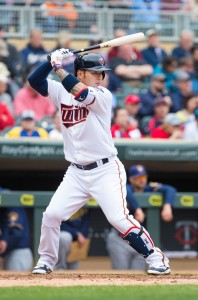As usual, the offseason has brought a few fairly significant long-term deals. Though we haven’t seen any nine-figure strikes — yet, at least — teams have staked a variety of interesting long-term bets on players who weren’t particularly close to free agency.
Since the start of February, in particular, three players with multiple years of control remaining have received guarantees that secure their financial future. But how wise were these investments? While it’s easy to like most early-career extensions — they are typically reached with young players who have played well at the game’s highest level, after all — they don’t all work out. The budgetary impact will never be as large as a pact to keep a top star off the market (or to bring one in), but even these early-career deals turn non-obligatory control rights into massive financial commitments that can hinder organizational flexibility.
Here are the most recent deals, with polls for each asking you to grade the merit of the investment:
Carlos Martinez, SP, Cardinals: five years, $51MM with two options ($17MM, $18MM): The first-time arb-eligible righty could be on the cusp of blooming into an established, top-of-the-rotation arm at 25 years of age. This deal extends the club’s control span over Martinez by four years, so there’s clear upside here. But it also comes with a hefty up-front promise and passes the risks inherent to pitching on to the Cards. The closest comp to this agreement, Matt Harrison’s $55MM deal with the Rangers, shows that there’s downside as well.
(Poll link for app users.)
Kevin Kiermaier, CF, Rays: six years, $53.5MM with one option ($13MM): Kiermaier was a Super Two player, so this deal boosts Tampa Bay’s control by three seasons. Only one of those is left to the team’s discretion, leaving the organization fairly firmly committed to the defensive whiz. While his glove gives him a lofty floor, that’s also dependent upon maintained athleticism. And Kiermaier hasn’t yet shown he’s more than an average hitter. If he can do that and keep tracking down just about everything hit in his general direction, he could be a star.
(Poll link for app users.)
Tim Anderson, SS, White Sox: six years, $25MM with two options ($12.5MM, $14MM): Announced just yesterday, this deal is quite a bit different than the others. Anderson hasn’t even completed a full season in the majors, and remains a highly variable player despite the evident talent. Understandably, he could only secure about half the guarantee of the other players, though he did easily beat the prior record for a sub-1 MLB service extension (Chris Archer, $20MM). Notably, this contract only promises to pay Anderson through his arbitration-eligible seasons (assuming he’s able to remain in the majors from this point forward), meaning the South Siders only extended their control rights by two years but also didn’t have to promise to pay Anderson too far out.
(Poll link for app users.)
